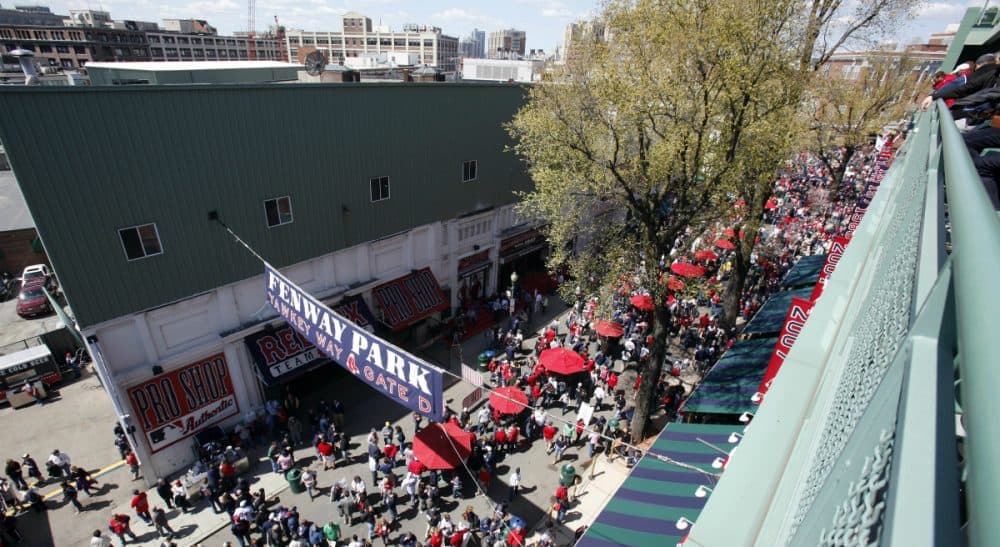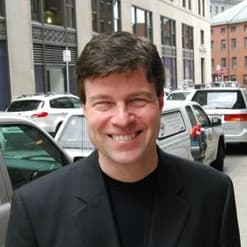Advertisement
The Deeply Flawed Agreement That Saved Fenway Park

“Tommy,” comes the admonishment, “what you did was very naughty.”
He nods, bracing for the worst.
“And for your punishment…”
“I’m grounded?”
“No…”
“Have to give everything back?”
“No…”
“Apologize, then?”
“No, not that either.”
“So what then?”
“Well, don’t ever do it again.”
That, in essence, is a summary of the just-released Massachusetts inspector general’s report on Boston’s 2013 property deals with the Red Sox. There were three in all: for $7.34 million the city sold the team air rights over Lansdowne Street and allowed it to take over Yawkey Way on game days. Then, in a separate transaction, Boston bought part of a parking lot from a Sox-affiliated entity for $2.67 million (which the city then turned into a public road).
To which the IG’s report might well have added: “Oh, and by the way Tommy, even though what you did was very, very bad, we’re still glad you did it.”
But these niceties notwithstanding, at the end of the day does anyone doubt this deal would have been done?
Tommy, in this case, is late Boston Mayor Thomas Menino. It wasn’t Menino himself who signed an agreement with the Sox, but rather the Boston Redevelopment Authority — the BRA. Still, the powerful mayor, in the closing months of his almost 21-year reign, had absolute control over the agency. Although the IG’s report doesn’t directly say so, it implies that the city’s deal with the Sox was cut in some back room, and then papered over by the BRA to give it an official patina.
It was the papering-over that was badly done. The IG thinks the city should have had a written report from an appraiser, not just some spreadsheets and an oral presentation. There was no public review of the transaction and the BRA board was only given six hours to consider it before voting. The agency didn’t officially make a finding that there was “blight” in the area, something that’s normally required. And the IG thinks that city may have been shorted financially, although it can’t say by how much.
OK, I get it. Next time the city wants to push something like this through, do a better job of prettying things up. Get a written appraisal, give board members more notice, be a little more transparent.
But these niceties notwithstanding, at the end of the day does anyone doubt this deal would have been done?
Of course it would have been. It was done to save Fenway Park.
As the IG recounts in its report, back in the 1990s the Red Sox’s previous owners, led by John Harrington, were hot to shutter Fenway Park and build a new stadium. Proposals were floated for something in South Boston, or perhaps a near-replica in the Fenway area. Their argument was that the nearly 100-year old stadium was dilapidated and dangerous — about to fall apart. In fact, the real issue was that it was too small, without the number of seats and the common space needed to generate big-league dollars. The city was in agreement and so was that state; the Legislature in fact passed an act declaring Fenway “inadequate for the purposes for which it was designed.”
And so it appeared that beloved Fenway, that “lyric little bandbox of a ballpark” in John Updike’s lovely words, was doomed. Some citizens, under the banner of “Save Fenway Park,” protested, but against the weight of powerful owners and united politicians, they seemed to have no hope.
But then in 2002 along came John Henry, Tom Werner and Larry Lucchino. What had seemed inevitable was no longer certain. Rather than seeing something old as a liability, the new owners saw the park as an asset — albeit, an asset in need of some serious upgrades. Working with architect Janet Marie Smith those were added in, including the Monster seats and the use of Yawkey Way as extra common space. But the Monster seats required the city grant air rights over Lansdowne Street and Yawkey Way required allowing the Sox to take over the street on game days.
The IG’s right. The formalities could have been better handled. But the result still would have been the same.
The BRA signed off on that in 2003. The vote in 2013 was really just a permanent extension of what had been a 10-year agreement. Sloppily handed, indeed. And perhaps the city could have exacted more money — although that’s the least persuasive part of the IG’s report. For one, the IG looks at revenues from the new seats and concession sales, thinking these a surrogate for value. They aren’t. Net income (after expenses) is the right measure and the IG makes clear it doesn’t have those figures. Moreover, the IG places too much faith in having an appraiser set value. Deals aren’t done by appraisers; they’re done by buyers and sellers negotiating for a price with which both can live. Appraisers only come in at the end as a check, if you will, on whether an agreement makes sense. (And it’s a dubious check at that; ever wonder at how miraculous it is that, when you buy a home, the appraisal is just enough to satisfy your mortgage lender? As Mark Twain might have said, “lies, damned lies and appraisals.”)
What really happened in 2013 was an example of (appropriately enough) hardball realpolitik: making something happen notwithstanding the formalities. The IG’s right. The formalities could have been better handled. But the result still would have been the same.
